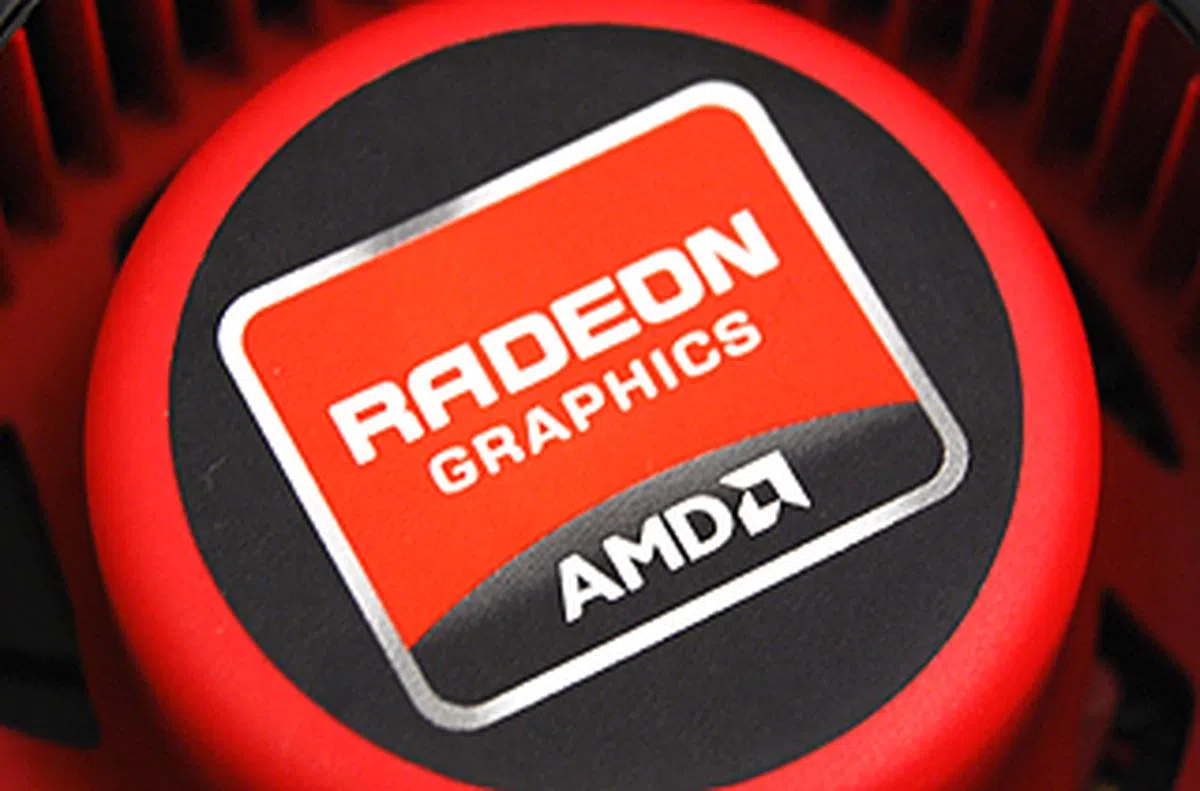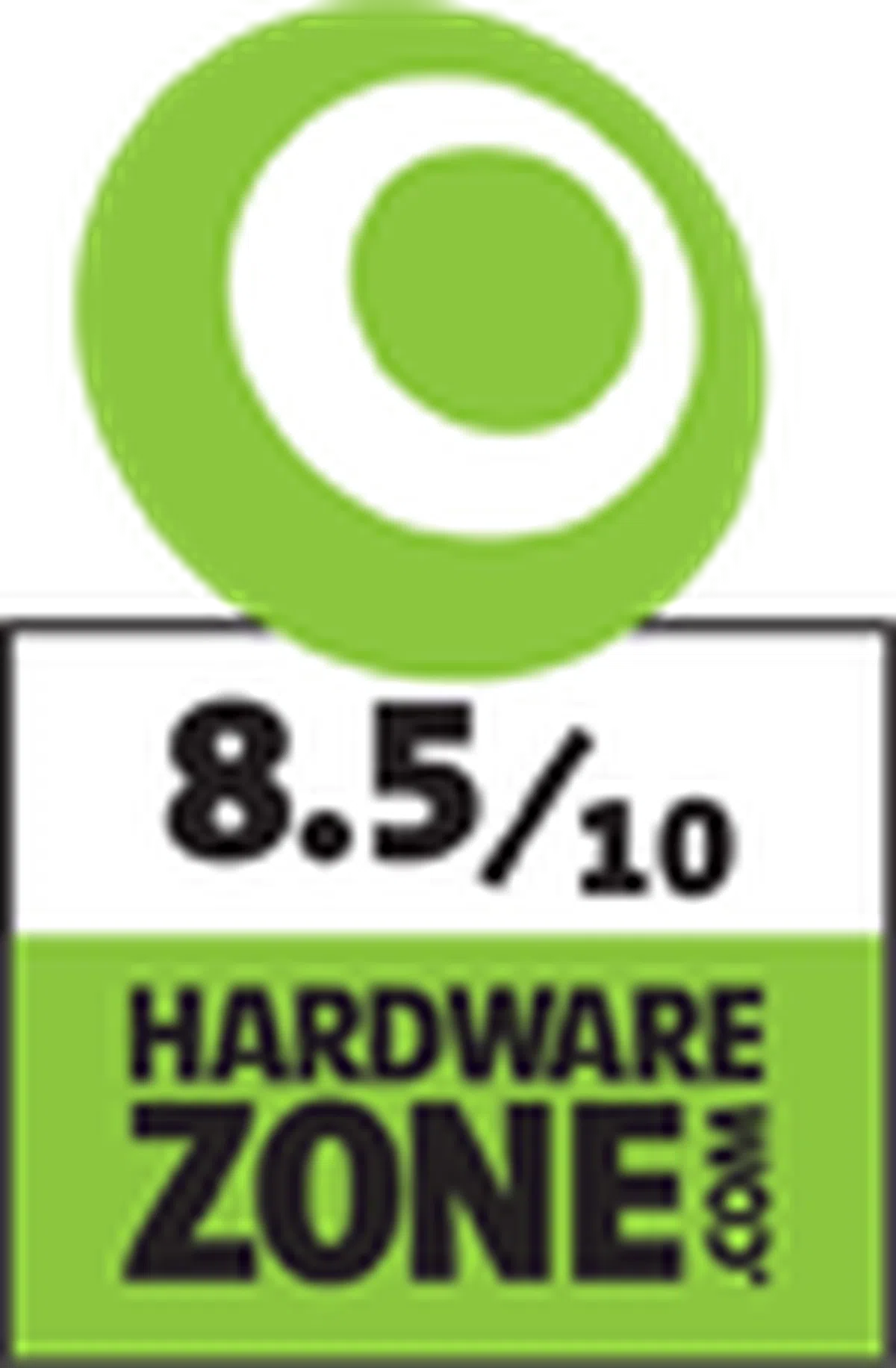AMD Radeon HD 6870 & HD 6850 - Northern Islands Ahoy!
AMD releases their next generation "Northern Islands" graphics cards, and as luck would have it, the Radeon HD 6870 and HD 6850 have washed up on our shores and into our labs. How can we resist benching them? Check out the full details!
By Kenny Yeo -
A New Beginning with AMD
In June 2008, ATI released their Radeon HD 4000 series to critical acclaim. In our review, we found it to be an absolute gem of a card, offering great performance for its price. It also took NVIDIA by surprise, so much so that they were forced to slash prices of their own cards even though they had only been out in the market for barely a month.
In September last year, ATI followed up with their awesome Evergreen series. Architecturally, Evergreen wasn’t a technological breakthrough, but ATI managed to increase graphics horsepower yet keep power levels down. The end result was some of the most power efficient cards we’ve seen. And crucially, ATI’s Evergreen cards were also the first in the world to offer full DirectX 11 compatibility, something that took their arch rival NVIDIA a further full six months to do. By which point ATI had already released their entire Evergreen line-up, and allowed them to build a significant lead over NVIDIA.
It’s been slightly more than a year since the launch of Evergreen and a lot has changed since. For one, the ATI brand has been killed off and has been replaced by AMD. AMD, if you recall, acquired ATI back in 2006. Hence, the new Radeons are now marketed as AMD cards, whereas the older Radeons will be continued to sold as ATI cards.
Also, NVIDIA’s Fermi is slowly gaining traction in the form of the outstanding GeForce GTX 460 and the mainstream GTS 450. Therefore what better time to launch your new generation of graphics cards then now?

AMD latest cards have washed up on our shores and into our labs, and we can't wait to see how they'll perform.
And today, AMD has kickstarted the next round of graphics card wars by landing the first punch with their all-new Radeon HD 6870 and HD 6850, part of their brand new Northern Islands line-up.
With the rebranding of ATI to AMD, they've also taken the liberty to tweak the nomenclature of the Northern Islands line-up. Previously in Evergreen, the 5800 series represented the company’s premium single GPU cards, while the 5900 series represented the company’s single dual-GPU card, which also happens to be their most powerful offering.
In Northern Islands, that has been tweaked a little as the 6800 series now refers only to the company’s higher-end mainstream offerings. While the most powerful single GPU Northern Islands cards will instead be bumped up into the 6900 series.
Now before we delve further, here’s a quick look at how the Radeon HD 6870 and HD 6850 stacks up against its closest rivals.
Here's how the two new SKUs from AMD compare against its closest competitors.
Model | AMDRadeon HD 6870 | AMDRadeon HD6850 | ATI Radeon HD 5870 | ATI Radeon HD 5850 | NVIDIAGeForce GTX 470 | NVIDIA GeForce GTX 460 |
Core Code | Barts XT | Barts PRO | Cypress XT | Cypress Pro | GF100 | GF104 |
Transistor Count | 1700 million | 1700 million | 2150 million | 2150 million | 3200 million | 1950 million |
Manufacturing Process | 40nm | 40nm | 40nm | 40nm | 40nm | 55nm |
Core Clock | 900MHz | 775MHz | 850MHz | 725MHz | 607MHz | 675MHz |
Stream Processors | 1120 Stream processing units | 960 Stream processing units | 1600 Stream processing units | 1440 Stream processing units | 448 Stream Processors | 336 Stream Processors |
Stream Processor Clock | 900MHz | 775MHz | 850MHz | 725MHz | 1215MHz | 1350MHz |
Texture Mapping Units (TMU) or Texture Filtering (TF) units | 56 | 48 | 80 | 72 | 56 | 56 |
Raster Operator units (ROP) | 32 | 32 | 32 | 32 | 40 | 24 |
Memory Clock | 4200MHz GDDR5 | 4000MHz GDDR5 | 4800MHz GDDR5 | 4000MHz GDDR5 | 3348MHz GDDR5 | 3600MHz GDDR5 |
DDR Memory Bus | 256-bit | 256-bit | 256-bit | 256-bit | 320-bit | 192 / 256-bit |
Memory Bandwidth | 134.4GB/s | 128GB/s | 153.6GB/s | 128GB/s | 133.9GB/s | 86.4/ 115.2GB/s |
PCI Express Interface | PCIe ver 2.0 x16 | PCIe ver 2.0 x16 | PCIe ver 2.0 x16 | PCIe ver 2.0 x16 | PCIe ver 2.0 x16 | PCIe ver 2.0 x16 |
Molex Power Connectors | 2 x 6-pin | 1 x 6-pin | 2 x 6-pin | 2 x 6-pin | 2 x 6-pin | 2 x 6-pin |
Multi GPU Technology | CrossFireX | CrossFireX | CrossFireX | CrossFireX | SLI | SLI |
DVI Output Support | 2 x Dual-Link | 2 x Dual-Link | 2 x Dual-Link | 2 x Dual-Link | 2 x Dual-Link | 2 x Dual-Link |
HDCP Output Support | Yes | Yes | Yes | Yes | Yes | Yes |
Street Price | Launch Price:US$239 | Launch Price: US$179 | ~US$360 | ~US$270 | ~US$259 | US$199 (1GB) / US$169 (768MB) |
Introducing Northern Islands
First and foremost, despite early rumors that Northern Islands will be built based on a 32nm or even a 28nm process, AMD has decided to stick with the tried and tested 40nm process from TSMC. This might seem as a bit of a disappointment to some, but seeing how NVIDIA suffered with Fermi, AMD has gone for the safe route, opting to stick to a 40nm manufacturing process and focus instead on cutting the cost of the new cards and getting products out to customers as quick as they can.

Architecturally, Northern Islands is mostly similar to Evergreen. However, the cores have been tweaked to be more efficient by having two dispatch processors, and the tessellation unit in the graphics engine has been improved.
However, that’s not to say that Northern Islands is more of the same. Most crucially, AMD has gone to great lengths to rectify the weaknesses of the Cypress chip that headlined Evergreen. One of which is to be improve on Northern Islands’ tessellation capability. To that end, AMD has revised the tessellation unit that was found in the older Radeon HD 5000 series.
The new tessellation unit is now into its seventh generation and according to AMD, it offers double the performance of the one found on the Evergreen cards. This is thanks to improved thread management and buffering. And with that, AMD hopes that their new cards will offer more competitive tessellation performance, something which the Evergreen cards were bogged down by when compared to their Fermi rivals.
Also, another significant change is that the addition of another dispatch processor that has its own dedicated cache. Previously in Evergreen, all the SIMD engines had to share a single dispatch processor. With this, the SIMD engines, and subsequently the cores, will be better utilized. And to further increase performance, AMD has slightly bumped up the clock speeds of the new Northern Islands chips.
Therefore, architecturally, Northern Islands is mostly unchanged, but AMD has tweaked it so that lesser cores are now needed to provide the same amount of graphics horsepower. This in turn translates to lesser transistors, smaller die size, and therefore makes the chip less expensive to manufacture. And this is the basic idea behind Northern Islands: to bring more affordable cards to end users by making the chips smaller and less expensive to manufacture, while improving its performance characteristics. In a nutshell, to offer more performance per dollar.
Improving EyeFinity
ATI’s Evergreen cards brought multi-display gaming to the mainstream audience with its ability to power up to three monitors using only a single graphics card. With Northern Islands, AMD is naturally expanding the prowess of EyeFinity.
First and foremost AMD has upgraded the output connectors of their cards. The cards now boast the latest HDMI 1.4a ports, which have 3D output support and thus are fully capable of 3D Blu-ray playback on any display device supporting this HDMI standard. HD audio bitstreaming, which was already standard on Evergreen cards, will continue to feature on Northern Islands, and this will surely please the movie lovers, audiophiles and HTPC enthusiasts.
AMD has also upgraded the DisplayPort ports to version 1.2 and offers two of them. This new version has much higher throughput to support multiple displays from a single port and run them each at different resolutions; it even supports 3D output. The number of monitors that a single DisplayPort 1.2 port can drive is determined by the amount of available bandwidth, which in turn is dependent on the resolution that the display is running at. For example, a single DisplayPort can now drive up to four displays running at 1080p resolution via daisy-chaining or using a Multi-Stream Transport (MST) hub. If you up that resolution to 2560 x 1440, then a single DisplayPort 1.2 port has only sufficient bandwidth for two. And although it is possible for a single DisplayPort 1.2 to drive more than six monitors running at lower resolutions (such as 1366 x 768), AMD has limited the maximum number of supported displays to six (no matter what connectivity option is used), which should be more than sufficient.
Here are some examples of what's possible with the Radeon HD 6870:



One thing to note about the twin DVI ports on the Radeon HD 6870 is that only one of them is a dual-link capable- the other is only single-link. Though this wouldn’t matter to most people, but for those who intend or are running on dual 2560 x 1600 pixels resolution monitors, it’s something to take note. Fortunately, the DisplayPort adapters are available to support more of such outputs.
EyeSpeed
EyeSpeed is a new marketing concept introduced by AMD and it basically refers to all things that can be GPU accelerated. This falls under the two broad categories of parallel processing and media processing and playback.
With Northern Islands, AMD is introducing UVD 3.0 (Universal Video Decoder 3.0), which is now able to decode more CODECs. Most notably, UVD 3.0 will offer hardware acceleration of 3D Blu-ray (MVC CODEC), and on top of that, MPEG-2 decoding is now handled completely by the GPU - in the past entrophy decoding of the decoding process still depended on the CPU. This should free up more CPU resources when watching MPEG2-encoded DVD or Blu-ray videos. Furthermore, MPEG- 4 part 2 DivX/XviD CODECs are also accelerated on this new UVD. Lastly, you can expect improved post-processing for better video quality in UVD 3.

UVD 3.0 compared to its predecessors.
AMD is also renaming their ATI Stream brand to AMD Accelerated Parallel Processing (APP) technology. This reaffirms and renews the company’s position on parallel processing applications. With APP, AMD is pushing the OpenCL as the preferred standard for parallel processing tasks. And in response to NVIDIA’s own CUDA Zone, AMD has also launched their very own OpenCL Zone.
CUDA already has a fairly strong foundation when it comes to parallel processing operations and tasks, and it’ll be interesting to see if AMD’s renewed vigor in this aspect will be able to challenge NVIDIA.
AMD HD3D Technology
With the new generation of cards, AMD has also addressed the issue of 3D. With Evergreen, 3D gaming could be enabled, but it was through third-party vendors and it wasn’t 'officially' supported. This made things confusing and troublesome for gamers because only specific monitors would work. With Northern Islands, however, things have changed.
AMD are now working with ecosystem partners to provide multiple solutions. AMD says this gives consumers more choice and flexibility, while partners can now also offer solutions that will differentiate themselves in the market. But most importantly, by supporting open standards, AMD says this would lead to lower costs, allowing more people to hop onto the 3D gaming bandwagon. This approach means using middleware software like iZ3D and DDD to provide various 3D experiences, such as using polarized glasses or shutter glasses technology. So the choice is wide and it's now up to the consumer.

Thanks to the inclusion of HDMI 1.4a ports, Northern Islands cards will be able to power any modern 3DTV and projectors. Here's a sample of what 3D displays are compatible with Northern Islands.
AMD also reiterated that by offering HDMI 1.4a ports on their new cards and hardware decoding for Blu-ray 3D, Northern Islands will be able to output 3D movies to any modern 3DTV (supporting the HDMI 1.4a standard). Looking ahead, this feature, coupled with the new UVD 3.0 will certainly make entry-level Northern Islands cards great for HTPC and media enthusiasts.
The AMD Radeon HD 6870 1GB GDDR5
The new cards have much to live up to, considering the success of the older Radeon HD 5000 series. And right from the get go, we were a bit dismayed to find that, despite its mainstream aspirations, the Radeon HD 6870 is not a small card, measuring in at about 10 inches. On the flip side, the blocky cooler, though similar to past designs, look a tad fresher.
The Radeon HD 6870 is the first Northern Islands card and it will be powered by the Barts XT GPU, which packs 1120 stream processing units. This is only equivalent to the older Radeon HD 5830, but not to worry because AMD says that the cores are now more efficient and we've established how this was possible earlier in the articles. Moving on, the Barts XT GPU has 56 texture mapping units and 32 raster operating units. Clock speeds are on the high side, considering its running at high 900MHz at the core, but this is all part of AMD's strategy of offering more performance per core. For the memory, it continues to run at a 256-bit wide memory interface (similar to the Cypress GPUs) and at 4200MHz DDR.
Power comes from two 6-pin PCIe power connectors and according to AMD, the maximum TDP of the card is 151W, similar to the old Radeon HD 5850. Idle power is supposedly reduced from 27W to 19W, but we'll soon see if this is true in our tests.
Here are photos of the new Radeon HD 6870:-

Our stock bone stock reference Radeon HD 6870 cards.

Confusingly, because of AMD’s new naming scheme, the new Radeon HD 6870 replaces the HD 5850. The new card looks bigger, thanks to the blocky cooler, but actually, the length of their PCBs is identical.

There are five video output connectors on the Radeon HD 6870. Count them: two mini-DisplayPorts, a single HDMI port, and two DVI ports (one is dual-link and the other is single-link).

Two 6-pin PCIe connectors are required to power this new card and AMD recommends a PSU rated for at least 500W.

Quite oddly, the Radeon HD 6870 comes with only a single CrossFireX connector, which means only 2-way CrossFireX is possible. Even the really mainstream Radeon HD 5770 could do 4-way CrossFireX. Looks like cost-cutting measures are taking hold.
The ASUS EAH6850 DirectCU
We didn’t manage to score a reference Radeon HD 6850 due to some shipment delays, but we think the slightly overclocked ASUS EAH6850 DirectCU would do just as well to represent our Radeon HD 6850 assessment.
The Radeon HD 6850 is powered by the Barts PRO GPU and it packs a more modest 960 stream processors, 48 texture mapping units and 32 raster operating units. Clock speeds are 775MHz at the core and the memory, which is clocked at 4000MHz DDR will also run at a 256-bit wide memory interface.
As for the ASUS EAH6850 DirectCU, it retains reference memory clock speeds, but its core is clocked slightly higher at 790MHz; a mere 15MHz, which judging from our experience will give a negligible boost in performance. Hence, this ASUS card should give us a good gauge of this SKU’s performance.
Finally, the maximum rated TDP of the card is 127W, and only a single 6-pin PCIe power connector is required to power it.

The ASUS EAH6850 DirectCU is slightly factory overclocked and comes with ASUS' recognizable DirectCU cooler.

The ASUS DirectCU cooler is unique because its heat pipes are flattened so as to make direct contact with the GPU core for faster heat dissipation.

The ASUS EAH6850 DirectCU trades the HD 6870’s twin mini-DisplayPorts for a single full-sized one.

A single 6-pin PCIe power connector is sufficient for the card and AMD recommends a PSU rated for 450W.

Like the Radeon HD 6870, the ASUS EAH6850 DirectCU also has only a single CrossFireX connector.
Test Setup
To evaluate AMD’s latest cards, we’ll be using our trusty Intel X58 setup with the following specifications:
- Intel Core i7-975 (3.33GHz)
- Gigabyte GA-EX58-UD4P motherboard
- 3 x 1GB DDR3-1333 G.Skill memory in triple channel mode
- Seagate 7200.10 200GB SATA hard drive
- Windows 7 Ultimate
Early leaks have pegged the new Radeon HD 6870 and HD 6850 to be a good match for the older Radeon HD 5870 and HD 5850, and it will be interesting to see if AMD’s new mainstream cards can match up to their high-end predecessors. The Radeon HD 5830 was omitted because our early tests showed that it was lacking the graphics horsepower needed to compete. AMD has advised that the Radeon HD 6850 is pegged just a shade lower than the current Radeon HD 5850 in terms of performance but it's more efficient. As for the Radeon HS 6870, AMD pegs it as a proper replacement of the Radeon HD 5850 as it should better it on most accounts.
And like we mentioned early, despite the ASUS EAH6850 DirectCU being slightly overclocked, our experience tells us that a mere 15MHz bump on the core will offer little, if any, improvements in performance and should be a good indicator of the Radeon HD 6850's performance.
According to AMD, the Radeon HD 6870 and HD 6850 were specifically targeted to go up against the 1GB and 768MB variants of the GeForce GTX 460 respectively. The GeForce GTX 460 is one of NVIDIA’s best offerings in recent times, and it’s clear that AMD has decided to go straight for the jugular with their new releases. Also, we have included benchmarks from the GeForce GTX 470 and both GTX 460, and also included the older GeForce GTX 285, which, in its heyday, used to be the fastest single GPU card money can buy.
The list of cards tested and driver version used:
- AMD Radeon HD 6870 1GB GDDR5 (Catalyst 10.10)
- ASUS EAH6850 DirectCU 1GB GDDR5 (Catalyst 10.10)
- ATI Radeon HD 5870 1GB GDDR5 (Catalyst 10.9)
- ATI Radeon HD 5850 1GB GDDR5 (Catalyst 10.9)
- NVIDIA GeForce GTX 470 1280MB GDDR5 (ForceWare 258.96)
- NVIDIA GeForce GTX 460 1GB GDDR5 (ForceWare 258.96)
- NVIDIA GeForce GTX 460 768MB GDDR5 (ForceWare 258.96)
- NVIDIA GeForce GTX 285 1GB GDDR3 (ForceWare 257.21)
The list of benchmark used are as follows:
- Futuremark 3DMark Vantage
- Crysis Warhead
- Far Cry 2
- Warhammer: Dawn of War 2
- Battlefield Bad Company 2
- “Heaven" from Unigine v2.1
- S.T.A.L.K.E.R.: Call of Pripyat
3DMark Vantage Results
The two Radeon HD 6800 series cards started off brightly on 3DMark Vantage, posting scores that were within our expectations. The Radeon HD 6870 outscored the Radeon HD 5850 by a slight margin, whereas the ASUS EAH6850 DirectCU scored significantly lower. The powerful Radeon HD 5870 still reigned supreme, recording the highest scores of the lot.
Against its key competitors, both the Radeon HD 6870 and ASUS EAH6850 DirectCU did well. The Radeon HD 6870 convincingly outscored the 1GB GeForce GTX 460 by around 15% overall, while the ASUS card beat the 768MB variant of the GeForce GTX 460 by a slightly lesser margin.

Crysis Warhead & Far Cry 2 Results
Moving on to Crysis Warhead, we get a taste of the Radeon HD 6800 series performance on real world gaming applications. The Radeon HD 6870 comfortably outperformed the old HD 5850 and was about 5% quicker overall. Against its rival, the 1GB GeForce GTX 460, it was about a whopping 20% quicker, which is impressive.
On the other hand, the ASUS EAH6850 DirectCU wasn’t too shabby either as it was only a shade slower than the Radeon HD 5850. Practically speaking, it was only about a frame or two slower. And against its marked competitor, the 768MB GeForce GTX 460, it was more than 10% quicker. In fact, both Radeon HD 6800 series cards were quicker even than the old GeForce GTX 285, which was once the world’s fastest single GPU card. Not bad for a supposedly mainstream card, eh?


Far Cry 2 has traditionally been an NVIDIA stronghold, so to speak, seeing how well their cards perform on this benchmark, but it seems that AMD has gone to some lengths to improve their cards in this segment. Here, the Radeon HD 6870 was marginally quicker than the HD 5870, and was competitive against the 1GB GeForce GTX 460, taking a slight lead when we increased the resolution.
The ASUS EAH6850 DirectCU also did well in that it was quicker than the Radeon HD 5850, and was also able to match the 768MB GeForce GTX 460. Like the Radeon HD 6870 and the 1GB GeForce GTX 460, the ASUS EAH6850 DirectCU lost out on the 1280 x 800 resolution, but gradually clawed itself back as we increased the resolution going from 1680 x 1050 to 1920 x 1200.


Dawn of War 2, Battlefield Bad Company 2 & Hawx 2 Results
Dawn of War 2 is usually a very tightly contested affair and this time round wasn’t any different. At a resolution of 1280 x 800, all cards racked up nearly the same frame rates, but as we increased the resolution, and especially at 1920 x 1200, it was apparent which were the quicker cards. At this resolution, the new Radeon HD 6870 is certainly admirable, easily beating the 1GB GeForce GTX 460 by a massive 30%. It even outperformed the GeForce GTX 470.
The less powerful ASUS EAH6850 DirectCU was less impressive, but it still managed to post an easy win over the 768MB GeForce GTX 460, and even the GeForce GTX 285.
Sure, NVIDIA could argue that Dawn of War 2 isn’t a fair comparison since AMD/ATI cards by default demote the FP16 render targets to R11G11B10 render targets, which are half the size and less accurate. We have investigated this claim earlier, and while it does affect performance, the fact is that the difference in graphics quality is so small that they are negligible and hence it makes sense for AMD to take this route as a means of offering more performance.

Tessellation was something that the old Radeon 5000 series cards weren’t very good at when compared to their NVIDIA rivals, and with the enhanced tessellation unit, AMD will be hoping that their new cards will be able to bring the fight to NVIDIA. On Bad Company 2, the Radeon HD 6870 was about 8% quicker than the 1GB GeForce GTX 460, whereas the ASUS EAH6850 DirectCU was a smidge faster than the 768MB GeForce GTX 460.

Haxw 2 is beautiful game with vast, sprawling landscapes. For some some reason, we couldn’t enable tessellation on our copy, so we took to running the game at maximum settings with 4x anti-aliasing to see how the cards would perform.
Despite the intensive settings, the cards managed well above 100fps, and here the Radeon HD 6870 suffered its only defeat against the 1GB GeForce GTX 460, as it was about 10% slower overall. The ASUS EAH6850 suffered the same fate too, losing out by around 12% to the 768MB GeForce GTX 460.

S.T.A.L.K.E.R.: Call of Pripyat Results
On the DirectX 11 runs of S.T.A.L.K.E.R.: Call of Pripyat, the new Radeons were off to a good start as they were significantly quicker than their rivals, but this was only on the Day run. On the SunShafts run, the GeForce GTX 460 fought back and was able to achieve parity with the Radeon HD 6870 while outclassing the less powerful ASUS EAH6850 DirectCU, which suggests that the Radeon HD 6870 and HD 6850 are not as adept at handling high dynamic range rendering as their rivals.
Again, when we ran S.T.A.L.K.E.R.: Call of Pripyat on DirectX10, the Radeons were obviously the quicker cards, whether on the Day or SunShafts run. Here, the Radeon HD 6870 and HD 6850 were about 5% to 20% quicker than their direct competitors.
DirectX 11 Results
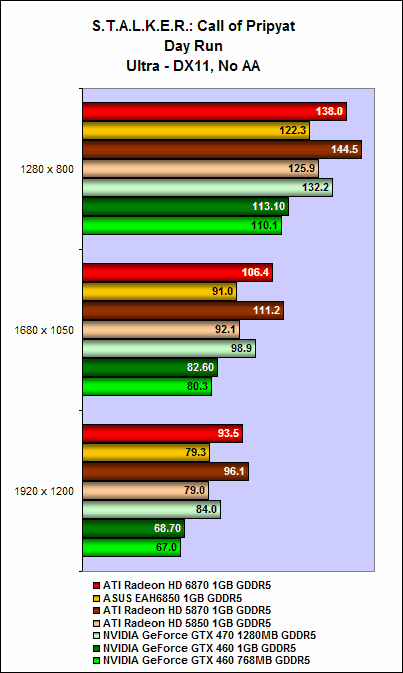 |  |
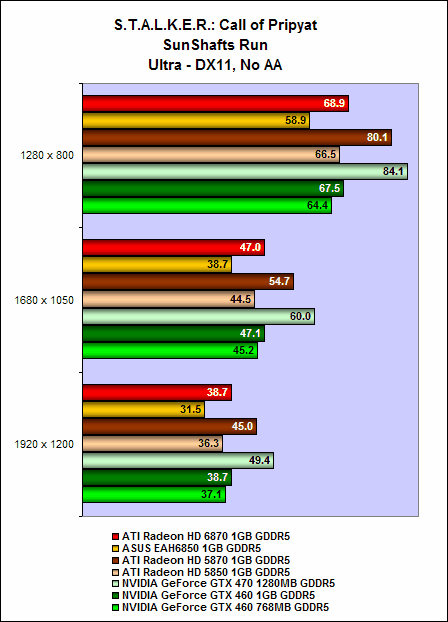 | 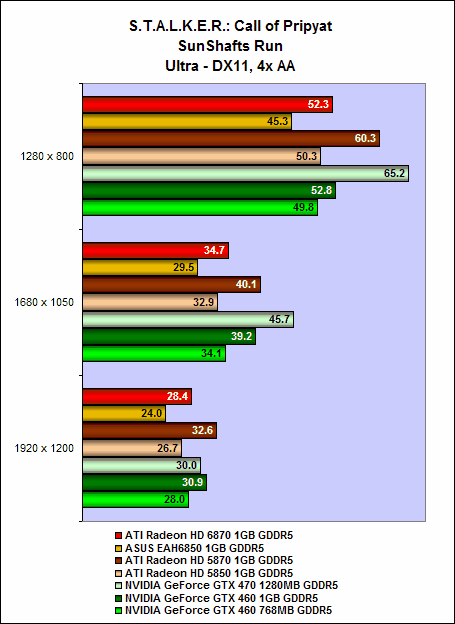 |
DirectX 10 Results
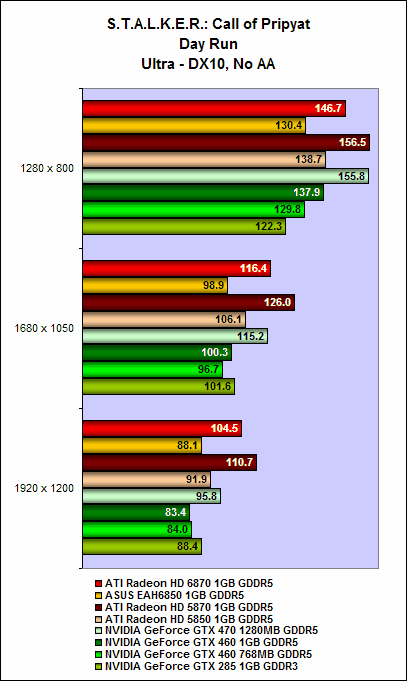 | 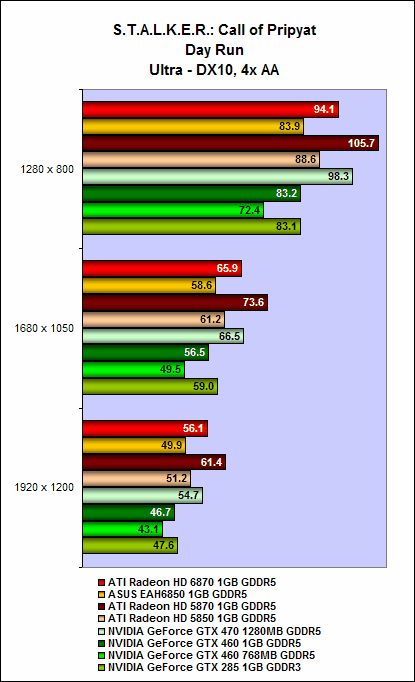 |
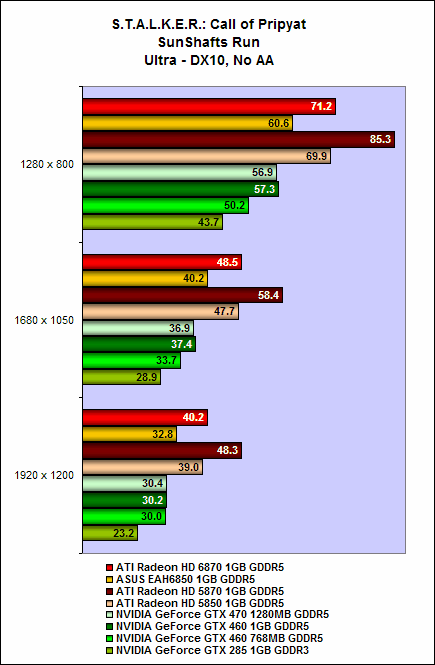 | 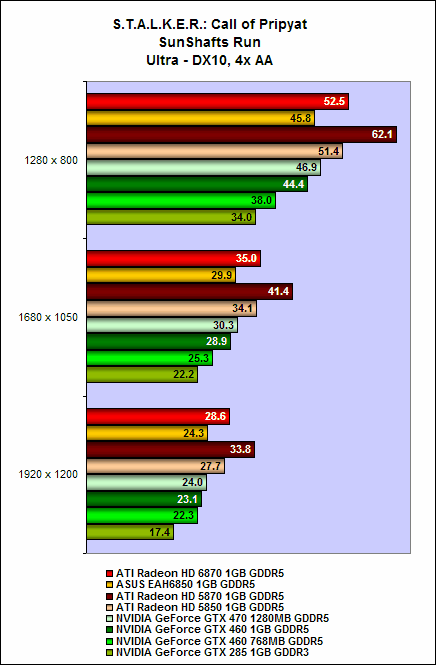 |
Unigine "Heaven" 2.1 Results
Unigine is a tessellation heavy benchmark and will be a good gauge of how effective the new tessellation unit in the Radeon HD 6870 and HD 6850 is. Running on DirectX 11 and with tessellation enabled, the new Radeon HD 6870 was easily able to outclass the 1GB GeForce GTX 460 and by a good 5% to 10% too. But perhaps what’s more impressive is that it was able to even outperform the powerful Radeon HD 5870.
Sadly, the ASUS EAH6850 DirectCU was less impressive, because although it was easily quicker than the old Radeon HD 5850, the 768MB GeForce GTX 460 proved to be a right handful for it. Also, the GeForce GTX 470 was by far and away the fastest card, showing just how efficient the Fermi architecture is at handling tessellation.
Disabling tessellation and reverting to DirectX10, however, the advantage was squarely with the new Radeon HD 6800 series cards. Here, the Radeon HD 6870 was about 20% quicker overall compared to the 1GB GeForce GTX 460, while the HD 6850 was about 10% quicker overall than the 768MB GeForce GTX 460. Also, both of the two Radeons were substantially faster than the GeForce GTX 285, which once again goes to show just how far graphics technology has progressed.
DirectX11 Results


DirectX 10 Results


Temperature
Although the new Radeon HD 6800 have been optimized for more efficient operation including having a reduced die size, operating temperatures remain on the high side, with the Radeon HD 6870 clocking a considerable 70 degrees Celsius, whereas the ASUS EAH6850 DirectCU and its custom cooler was, unsurprisingly, cooler at 64 degrees Celsius. Nevertheless, while the results here suggests that the new chips will be cooler to run, they still lose out to both variants of the GeForce GTX 460.

Power Consumption
Power efficiency has been a hallmark of the new generation Radeons and with Northern Islands, AMD has only improved it. The new Radeon HD 6870, though faster than the HD 5850, recorded nearly identical power draw figures both at idle and at load. The ASUS EAH6850 DirectCU did well too, and on a whole, both of the new Radeons racked up lower power draw figures compared to their direct competitors.

Overclocking
Happily, the two new Radeon cards are also eager overclockers. Using the effective MSI Afterburner overclocking utility, we were able to attain a maximum overclocking state of a full 1GHz at the core and 4400MHz DDR at the memory for the Radeon HD 6870. This gave us a substantial 14% increase in performance.
With the ASUS EAH6850 DirectCU, we were able to reach 950MHz at the core and 4800MHz DDR at the memory, which gave us 7216 3DMarks, an improvement of 5%. This was comparable to a reference clocked Radeon HD 6870.

Jolly Good Times
As we’ve mentioned in our opener, Northern Islands isn’t a major step forward for AMD. They've gone for the safe route and opted to stick to a 40nm process and made improvements by making the cores more efficient and the results show. The new Radeon HD 6870 and HD 6850, though packed with less cores, are just about as quick or even quicker than their predecessors.
Between the Radeon HD 6870 and HD 6850, the former is the more interesting of the two. Though not a direct replacement for the Radeon HD 5850, it was easily quicker than its predecessor and it some instances, could even challenge the Radeon HD 5870. Therefore, the new Radeon HD 6870 is certainly not short on performance. Furthermore, it is also slightly cooler and more power efficient to run.
And to sweeten the deal, there’s the price. According to AMD, the launch price of the Radeon HD 6870 will be around US$239. This is markedly less than the existing Radeon HD 5850, which is presently retailing for around US$270; and the Radeon HD 5870, which costs a a whopping US$360. Needless to say, the Radeon HD 6870 represents tremendous value for money and it seems that AMD’s efforts to enhance the existing architecture and bring manufacturing costs down have paid off.
Furthermore, let’s not forget the various other niceties that Northern Islands introduces. The inclusion of HDMI 1.4a ports means that Northern Islands is fully capable of integrating into the existing 3D ecosystem. And admittedly, although not every user will make full use of the multi-display possibilities that EyeFinity offers, it is a nifty feature to have anyways, plus, it’s good to know that you can expand your desktop real estate easily.
To add, having DisplayPort 1.2 ports means that the cards are future proofed, although it remains to be seen if DisplayPorts will be widely adopted as the connector of choice in the future. Ultimately, the wide variety of output options offered by Northern Islands will ensure that users are ready for whatever comes their way in the future. These new features and additions, coupled with the Radeon HD 6870’s outstanding performance makes it a very attractive card for the mainstream to high-end market.
In response to this bold new offering from AMD, NVIDIA has promptly slashed prices of their 1GB GeForce GTX 460 cards from US$229 to US$199, and also prices of their GeForce GTX 470 down to US$259. This should give you an idea of just how much of a threat NVIDIA thinks the new Radeon HD 6870 is.
With this cut in price, NVIDIA has quite successfully managed to differentiate its 1GB GeForce GTX 460 from the Radeon HD 6870 - they don’t look like direct competitors anymore. Nevertheless, it doesn’t escape the fact that the Radeon HD 6870, is the best mid to high-end graphics cards in the market right now. It might cost more than the GeForce GTX 460, which is a decent card in its own rights, but we feel that premium is justified because of its better overall performance and also the new features it offers.
Factor in the GeFore GTX 470, however, and a real dilemma arises, because at US$259, it’s only about US$20 more expensive, and by and large, the GTX 470 is the faster card especially when tessellation comes into play. However, it is also considerable hotter to run and obviously more power hungry, so it’s really a give and take situation. If you are willing to ignore the power hungry characteristics of the GeForce GTX 470 or if performance is your utmost concern, the GeForce GTX 470 suddenly looks like an attractive option.

The Radeon HD 6870 is an interesting and very attractive option for mid to high-end gamers and enthusiasts. On the other hand, the Radeon HD 6850 though not as quick and powerful, is still good value for money.
On the other hand, the Radeon HD 6850 is a little less exciting, mostly because of its less impressive performance. Although it’s not quicker than the old Radeon HD 5850, it was able to come close in most instances. But more importantly, it did manage to beat its direct competitor from NVIDIA, the 786MB GeForce GTX 460, though not to the same great extent as the Radeon HD 6870 compared to the 1GB GeForce GTX 460.
Estimated launch price of the Radeon HD 6850 is expected to be around US$179, which makes it slightly more costly than the 768MB GeForce GTX 460, which normally retails for around US$169. But if you factor in the minor performance advantage and the host of new Northern Islands features, then Radeon HD 6850 is actually a very decent mainstream card.
Locally, the Radeon HD 6870 can be expected to be found for around S$389 and the HD 6850 for around S$318. This makes it considerably cheaper than both the existing Radeon HD 5870 and HD 5850 - S$599 and S$429 respectively (although one can expect price cuts to come in due time). And against the competition from NVIDIA, the new Radeons do command a premium, which is inline with their US pricing. In contrast, the 768MB variants of the GeForce GTX 460 can be found for around S$280, and the 1GB ones for around S$320.
All things considered, the new Northern Islands cards are off to a good start, offering good bang for buck, something that Radeons have come to be known for. And although the Radeon HD 6870 is easily the more impressive of the two, the HD 6850 is not too shabby itself and is a really decent offering too if you can’t stretch your budget to meet the HD 6870.
The introduction of new generation graphics have always been exciting times, and with the high-end Cayman and (possibly dual-GPU) Antilles part set to be unleashed in the following months, we can't wait to see what other goodies AMD has in store for us. As for NVIDIA, these are trying times, since they only recently managed to get their act together with the GeForce GTX 460 and GTS 450, and yet now have to contend with AMD’s latest. In any case, competition is good for us enthusiasts and gamers, so let the good times roll. Stay tuned for our follow-up CrossFire article!
|  |
Our articles may contain affiliate links. If you buy through these links, we may earn a small commission.
